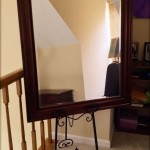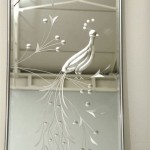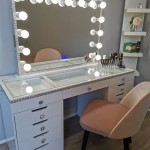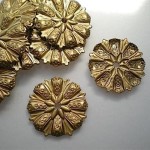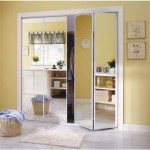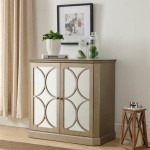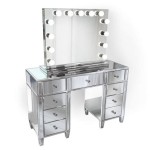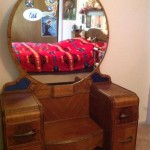How To Hang a Heavy Mirror Without Glue
Hanging a heavy mirror securely without using adhesive requires careful planning and the right hardware. This approach offers flexibility for future adjustments or removal without damaging the wall. This guide outlines the necessary steps and considerations for successful installation.
Assessing the Mirror and Wall: Begin by accurately measuring the mirror's dimensions and weight. This information is crucial for selecting appropriate hanging hardware. Identify the wall type (drywall, plaster, concrete, etc.) as this determines the type of anchors required. Locate wall studs using a stud finder for optimal support, especially for heavier mirrors.
Choosing the Right Hanging Hardware: Several options are available for hanging heavy mirrors without glue. D-Rings and Wire: This is a common method where D-rings are attached to the back of the mirror and a wire is strung between them. This wire is then hung on hooks or screws in the wall. Heavy-Duty Picture Hangers: Rated for specific weight capacities, these hangers feature angled hooks or nails designed to grip the wall securely. French Cleats: These interlocking wooden or metal brackets provide a strong and stable hanging solution for heavier items. One part of the cleat attaches to the wall, while the other attaches to the mirror, allowing them to interlock and support the weight. Mirror Mounting Clips: These clips grip the edges of the mirror and are secured to the wall with screws. They offer a clean, minimalist look and are suitable for mirrors with smooth frames or edges. J-Hooks: These hooks are screwed into the wall and provide a ledge for the mirror to rest on. They are suitable for mirrors with a frame or backing that can be hooked onto them.
Gathering Your Equipment: Once you've determined the type of hardware, gather the necessary components. The exact list will depend on the hardware chosen, but it should include an appropriate drill, drill bits matching the type of wall anchors and screws used, a level, a measuring tape, a pencil for marking, and safety glasses.
Preparing the Wall: Mark the desired location of the mirror on the wall with a pencil. Use a level to ensure the markings are straight. If using wall studs, mark their locations as well. If studs are not available or the mirror is exceptionally heavy, use wall anchors appropriate for the wall type and the weight of the mirror. Drill pilot holes for the anchors or screws according to the manufacturer's instructions.
Installing the Hardware: If using D-rings and wire install them ensuring they are evenly spaced and level. The wire should be taut but not overly tight. Attach the chosen hooks or screws to the wall at the marked locations, considering the wire length and the desired hanging height. For French cleats, install the wall portion of the cleat first, ensuring it is level. Then attach the mating cleat to the back of the mirror, aligning it with the wall cleat. Carefully hang the mirror by engaging the two cleats. For heavy-duty picture hangers, follow the manufacturer's instructions for installation, ensuring they are securely fastened to the wall. For mirror mounting clips, attach the clips to the mirror edges first, then secure them to the wall with screws. For J-hooks, screw the hooks into the wall at the desired height, ensuring they are level and can support the mirror's weight. Carefully place the mirror onto the hooks.
Ensuring Stability and Safety: Once the mirror is hung, check its stability by gently pushing on it in different places. It should remain secure and level. For exceptionally heavy mirrors, consider adding additional support brackets or safety wires to prevent accidental dislodging. Regularly inspect the hanging hardware for any signs of wear or damage. Replace any worn or damaged parts promptly to ensure continued safety and stability.
Considering Specific Wall Types: Different wall types require different anchoring methods. Drywall: For lighter mirrors, standard drywall anchors may suffice. For heavier mirrors, toggle bolts or molly bolts offer greater holding power. Plaster: Plaster walls can be brittle. Use wall anchors specifically designed for plaster to avoid cracking. Concrete: Concrete walls require concrete screws or anchors installed with a hammer drill. Ensure the drill bit and anchors are appropriate for concrete.
Tips for a Smooth Installation: Measuring accurately is crucial throughout the process. Double-check all measurements before drilling or attaching hardware. Using a level ensures the mirror hangs straight. When drilling into walls, use a drill bit slightly smaller than the diameter of the screws or anchors. This will allow the screws or anchors to bite into the wall securely. If working with a particularly large or heavy mirror, enlist the help of another person to ensure safe handling and installation. For very heavy mirrors, consider consulting a professional installer for expert advice and assistance.
Maintenance and Aftercare: Periodically check the hanging hardware, especially for heavier mirrors, to ensure its integrity. Tighten any loose screws or replace any damaged parts promptly. Clean the mirror surface with a suitable glass cleaner as needed. Avoid using abrasive cleaners or materials that could scratch the mirror. If the mirror needs to be removed, carefully disengage the hanging hardware to prevent damage to both the mirror and the wall. If you intend to move the mirror to a different location, repeat the entire hanging process, ensuring the new location can support the weight of the mirror.

How To Install A Mirror Without Frame Merrypad
How To Hang A Heavy Mirror On Drywall Without Damaging It Or The Wall Quora

How To Install A Mirror Without Frame Merrypad

How To Hang A Hanging Mirror Without Accompanying Hardware

How To Hang A Frameless Mirror On The Wall With Pictures

How To Hang A Heavy Mirror With Pictures Wikihow

How To Hang A Heavy Mirror The Home Depot

How To Hang A Large Wall Mirror Step By Tutorial

3 Simple Ways To Hang A Mirror On Wall Without Nails Wikihow

How To Hang A Mirror On Wall Without Nails

